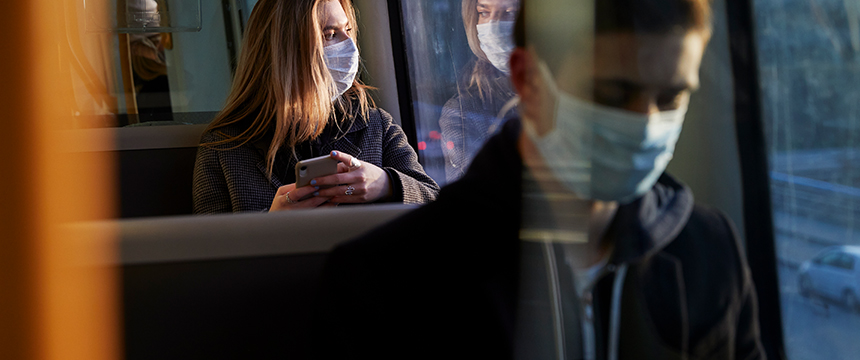No More Masks on Public Transportation (For Now) – Is Government Regulation of COVID-19 Ending?

Following a federal judge’s ruling last week, striking down the Centers for Disease Control and Prevention’s (CDC’s) mask mandate in airports and other public transportation settings nationwide, the agency’s ability to impose future restrictions is in doubt.
In her ruling, U.S. District Judge Kathryn Kimball Mizelle found the mask mandate exceeded the CDC’s authority under federal public health law, and she put forth a narrow interpretation that would limit the agency’s ability to take actions intended to control the spread of COVID-19 and other airborne diseases. (Her opinion emphasizes that the word “sanitation” in the law authorizing CDC regulation does not extend to a mask, which “cleans nothing” and at most “traps virus droplets” but “neither ‘sanitizes’ the person wearing the mask nor ‘sanitizes’ the conveyance.”) Judge Mizelle also determined that the CDC failed to comply with administrative rulemaking procedures in issuing the mandate.
Most airlines immediately dropped their mask requirements for employees and passengers following the ruling, and the top rideshare companies have done the same. The Biden Administration has appealed the ruling, based on the CDC’s assessment that requiring masks in public transportation is necessary to protect public health.
So, while the status of masks in public transportation remains in doubt, what mandates are still in effect and what should employers do?
There are few remaining mask or vaccine mandates in the United States, as federal, state, and local restrictions have largely ended or were relaxed after COVID-19 cases declined following the Omicron variant surge. Business are generally free to drop mask requirements, except in certain settings such as health care facilities. OSHA’s proposed vaccine mandate for large employers was overturned in January, and the CDC’s revised masking guidance from February no longer differentiates among individuals who are vaccinated and unvaccinated. (Instead, the CDC currently recommends masks based primarily on COVID-19 community levels, but not in most indoor settings in areas where there are low or medium levels of COVID-19 transmission.)
But, keep in mind that employers still have a duty to take reasonable measures to protect employees from COVID-19, although the extent of certain measures is currently unclear since OSHA has not updated its guidance for employers yet to align with the CDC’s revised masking guidance. For health care employers, a permanent rule from OSHA on protecting health care workers from COVID-19 is forthcoming. In addition, all employers should continue to take precautions including regular cleaning and requiring sick employees to stay home, and also check applicable state and local requirements.
Meanwhile, the BA.2 sub-variant of Omicron is now the dominant strain of COVID-19 in the United States, and infections have increased in recent weeks, particularly in the Northeast. Certain localities have considered re-imposing mask mandates, and many airports and transportation authorities have maintained mask mandates despite the lack of a federal requirement. Therefore, it is too soon to declare that government mandates are over, but we are continuing to move in that direction.
